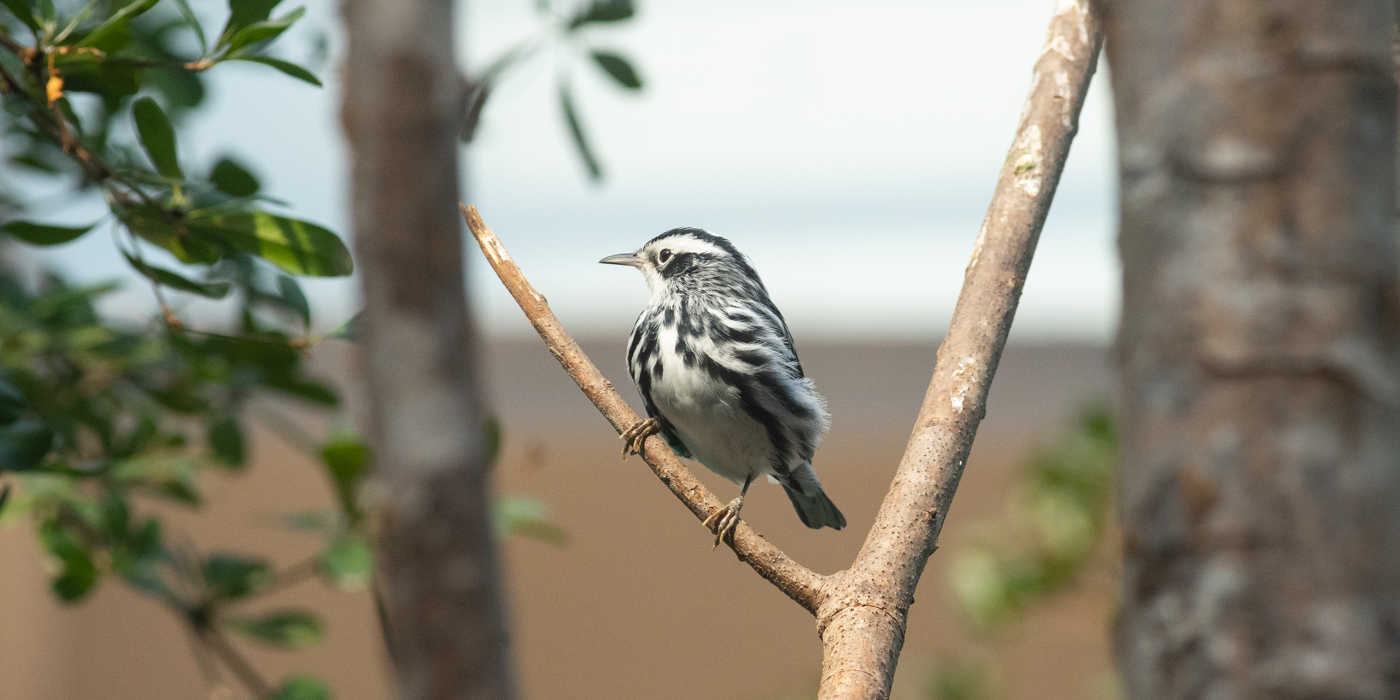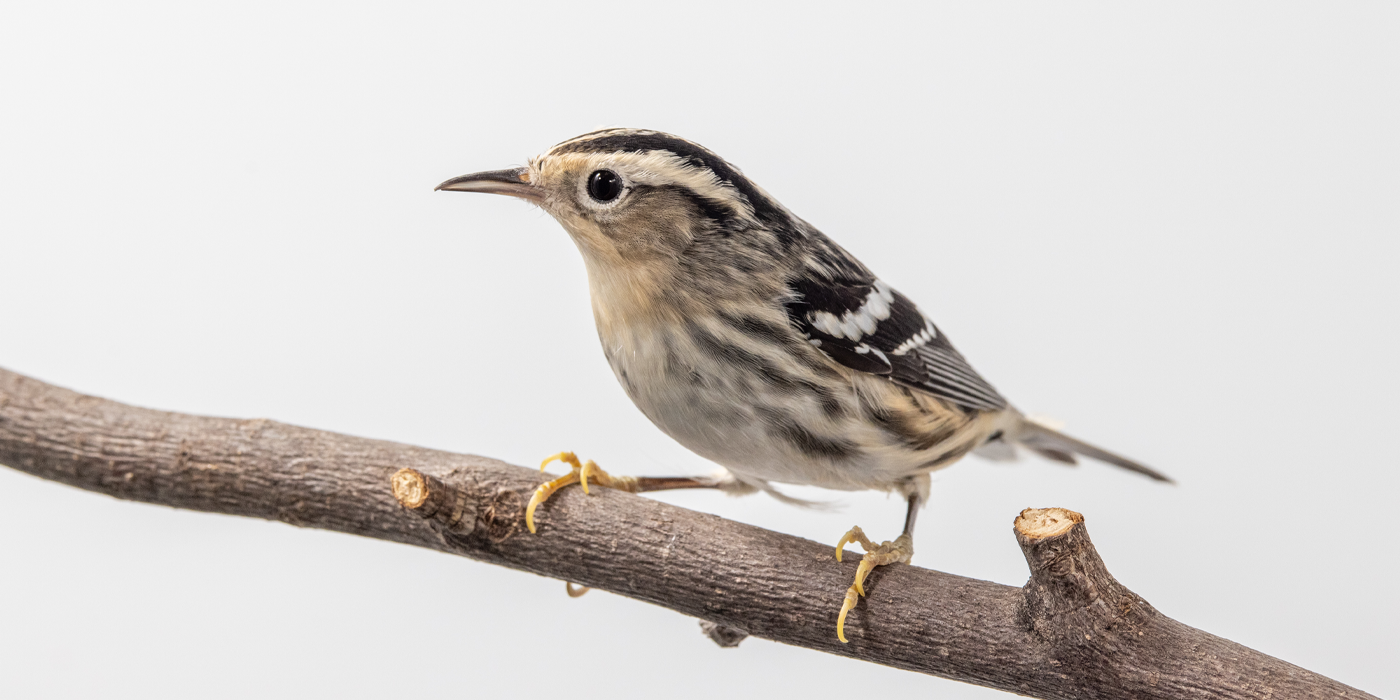Physical Description
Size
Native Habitat
Lifespan
Communication
Food/Eating Habits
Sleep Habits
Social Structure
Reproduction and Development
After beginning their spring migration, black-and-white warblers reach their northern breeding grounds in April, which is early for migratory birds. Males arrive before females, and they use this extra time to create territories for themselves by the time potential mates arrive.
After a pair has been established, the female will lead males to potential nesting sites within their territory. Females build cup-shaped nests, usually on the ground, but well-hidden among leaves and grasses. Common nesting materials include twigs, grasses, moss, tree bark, and pine needles. Females incubate the eggs, which are light brown with dark speckles. The eggs hatch after about two weeks, and both parents help feed the babies until they are ready to leave the nest.
Conservation Efforts
Although these birds have been designated by the IUCN as "least concern," their population is decreasing. This is largely due to habitat loss in both their summer and winter grounds. They are also threatened by pesticide use, which kills the insects they rely on for food. And as nighttime migrants, they are at greater risk for fatal collisions with hard-to-see manmade objects, like telephone poles and reflective buildings.
Like many birds that build open cup-shaped nests, black-and-white warblers are at risk for being parasitized by cowbirds. In nest parasitism, the "parasite" species (the cowbird) lays its eggs in the nests of the "host" species (the warbler). Many of these host birds will then incubate the egg and raise the young cowbird as if it were one of its own brood, often neglecting their own young in the process.
Help this Species
Be a smart consumer. Choose products made with sustainable ingredients, such as Smithsonian certified Bird Friendly coffees, which support farmers striving to limit their impact on wildlife and habitat.
Choose your pets wisely, and do your research before bringing an animal home. Exotic animals don’t always make great pets. Many require special care and live for a long time. Tropical reptiles and small mammals are often traded internationally and may be victims of the illegal pet trade. Never release animals that have been kept as pets into the wild.
Be a responsible cat owner, and keep cats indoors or under restraint when outside. Never release animals that have been kept as pets into the wild.
Conservation starts with you! Join a citizen science project where you can help collect valuable data for scientists. Encourage your friends and family to get involved too.
Plant native flowers in your garden to help feed resident and migrating pollinators. You'll make your lawn beautiful and help wildlife at the same time!
Smithsonian's National Zoo and Conservation Biology Institute. (n.d.). Black-and-white warbler. Retrieved January 7, 2026, from https://nationalzoo.si.edu/animals/black-and-white-warbler
Animal News





